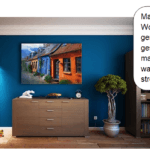In this lesson, you will learn about um…zu and damit sentences. You will understand how to use sentences with um…zu and damit, as well as the meanings of these two conjunctions. Additionally, you will learn about more conjunctions of this kind, making it easier to understand the important rules for learning dependent and independent sentences effectively.
Thank you for reading this post, don't forget to subscribe!CONTENTS
Final Clauses/Clauses of purpose
Damit clauses
Um … zu clauses
Conversion damit into um … zu + infinitive
Final Clauses/Clauses of purpose
Final or intentional clauses are dependent clauses that express the intention, purpose or goal of the main clause. A dependent clause usually comes after the main one.
It is introduced by following conjuntions: damit ili um … zu
Um … zu + INFINITIVE is an infinitive construction of causal character.
Both conjunctions correspond to English so that.
Damit clauses
Damit is the most frequently used conjunction in final clauses.
The final sentence using the conjunction “damit” is a dependent clause. It is used when the subject in the main and dependent clauses is different. These clauses are mostly used in the present tense.
If the subject in both sentences is the same, we can transform the “damit” sentence into an infinitive construction. In this case, the modal verb from the “damit” sentence is often omitted.
The dependent clause usually comes after the main clause, but they can also come the other way around.
For example:
Ich bin nach Deutschland gekommen, damit meine Familie ein besseres Leben hat. – I came to Germany so that my family could have a better life.
In spoken language, final sentences often stand alone:
For example:
Warum sind sie nach Deutschland gekommen?
Damit meine Familie ein besseres Leben hat.
Warum arbeitest du so viel? – Damit du mehr Freizeit hast.
The modal verbs möchten, sollen and wollen express intention and therefore cannot be in a final/intentional sentence. We replace them with the modal verb können.
For example:
Er versteckte das Handy in seinem Zimmer. Niemand sollte es finden.
– Er versteckte das Handy in seinem Zimmer, damit ihn niemand finden konnte.
Sie hat sehr laut gesprochen. Alle Leute sollten sie hören.
– Sie hat sehr laut gesprochen, damit sie alle Leute hören.
Um… zu clauses
If the subject in the main and dependent clause is the same, then you can turn damit-sentence into an infinitive sentence with um..zu + infinitive. Of course, you can also use a damit sentence, but the infinitive construction is stylish better:
For example:
Ich lerne Deutsch, damit ich einen Job in Deutschland finde.
It’s a better option Ich lerne Deutsch, um einen Job in Deutschland zu finden.
The modal verbs möchten, sollen and wollen express intention and therefore cannot be in a final/intentional sentence. We replace them with the modal verb können.
Final sentences often contain the modal verb können.
For example:
Ich lerne Deutsch, um einen Job in Deutschland finden zu können.
Na kraju infintivne konstrukcije zu stoji između glagola u infinitivu i modalnog glagola u infintivu.
In infinitive constructions, “zu” is placed between the main verb and the modal verb. The modal verb is placed at the end of the sentence. The word “können” can be omitted without significantly changing the intended meaning. The same rule for modal verbs that applies to “damit” also applies to “um…zu.”
For example:
Er spart sein Taschengeld, um sich das Viedeospiel kaufen zu können.
Er spart sein Taschengeld, um sich das Viedeospiel zu kaufen.
He is saving his pocket money because he intends to buy a video game or to be able to buy a video game, certainly both sentences express intention.
In spoken language, the infinitive construction can stand alone, as an answer to a question.
For example:
Warum sind Sie in Deutschland? – Um Medizin zu studieren.
Warum kommst du immer so spät? – Um dich zu ärgern.
Conversion of damit to um…zu + infinitive
The process of converting a damit sentence into the infinitive construction um … zu is simple. If the subjects in both sentences are the same, then we drop the subject and the conjunction damit in the second sentence, and we turn the finite verb into an infinitive, and put zu in front of it.
For example:
Ich gehe jeden Tag ins Fitnesstudio, damit ich fit werde.
Ich gehe jeden Tag ins Fitnesstudio, um fit zu werden.
Dafür i dazu
The adverbial conjunctions dafür and dazu can also express intention, as well as goal and purpose. However, they stand in the main clause, which always comes after the main clause. But here, in relation to damit and um … zu in the sentence, an inversion occurs.
For example:
Ich lerne Deutsch, damit ich einen Job in Deutschland finde.
Ich lerne Deutsch, um einen Job in Deutschland zu finden.
BUT:
Ich möchte einen Job in Deutschland finden, dafür letne ich Deutsch.
Ich möchte hier leben, dazu suche ich hier eienen Job.
Considering that dafür and dazu are adverbs in the function of conjunctions, the rule is that the verb must stand immediately after the conjunction. See above in the examples.
Zum / zur / für+ IMENICA
Intention, goal or purpose can also be expressed using the construction zum + nominal infinitive or with zum/zur/ für + noun, which generally refers to some activity. In written speech, the preposition zwecks is also used.
For example:
Zur Entspannug gehe ich ins Spa. – I go to the spa to relax.
Für unseren Urlaub haben wir einen Kredit aufgenommen. – We have taken out a loan for our holiday.
Wir möchten Sie bitten, zwecks späterer Übrprüfung die Akten aufzubewahren. – We would like to ask you to keep the files for later review.
See more:



